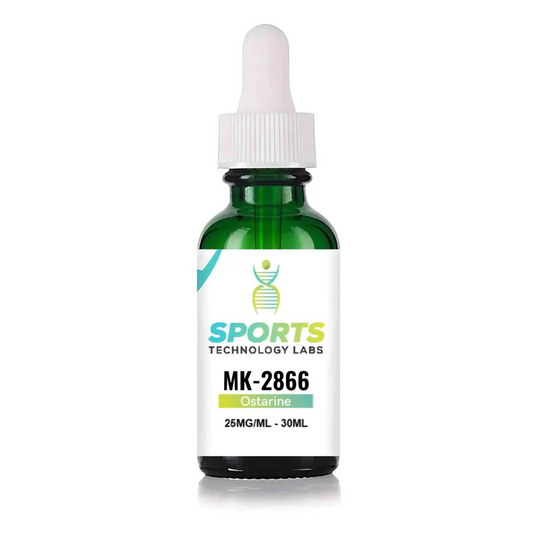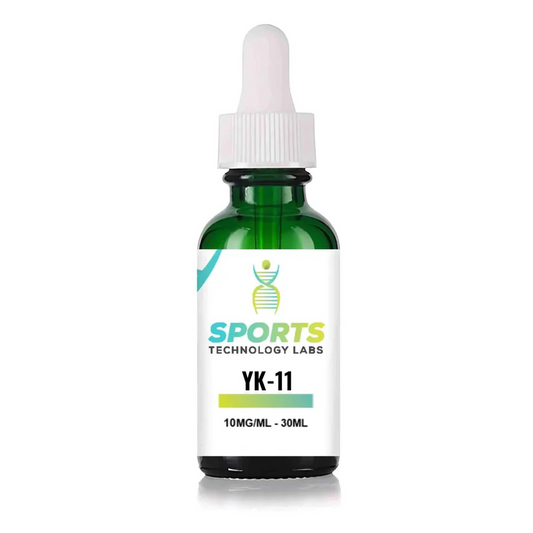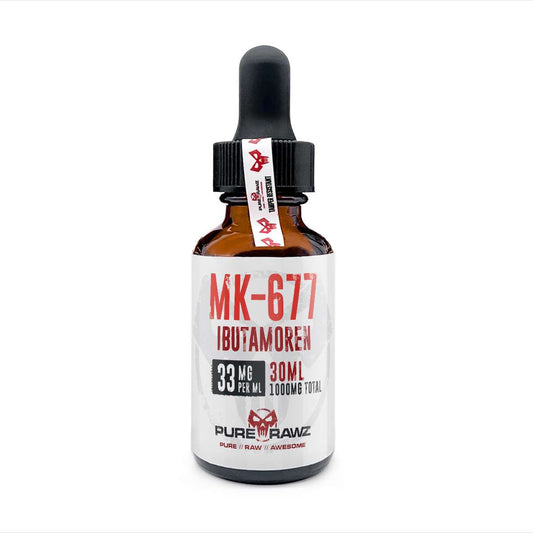Are SARMs Supplements?

- SARMs vs. Traditional Supplements -
- Potential Benefits and Risks of SARMs -
In the rapidly growing world of fitness and bodybuilding, supplements are a mainstay for those seeking to enhance their performance, strength, and recovery. From protein powders to creatine, supplements have long been recognized for their role in supporting fitness goals. However, a relatively new class of compounds, known as SARMs (Selective Androgen Receptor Modulators), has gained popularity, leading many to question: Are SARMs supplements?
To answer this question, we need to understand the nature of SARMs, how they work, their intended uses, and how they differ from traditional supplements. By delving into the science behind SARMs and comparing them to well-established dietary supplements, we can clarify whether SARMs truly belong in the same category.
What Are SARMs?
Selective Androgen Receptor Modulators, or SARMs, are a class of synthetic compounds designed to mimic the effects of anabolic steroids. They work by binding to androgen receptors in the body, which are responsible for regulating muscle growth and other androgen-related functions such as bone density and fat metabolism. Unlike anabolic steroids, which bind to androgen receptors throughout the entire body, SARMs are designed to selectively target specific tissues, such as skeletal muscle and bone, while minimizing their impact on other organs like the liver, heart, and prostate.
SARMs were originally developed to treat conditions such as muscle wasting, osteoporosis, and even certain types of cancer. Their ability to promote muscle growth without many of the severe side effects associated with anabolic steroids has made them attractive to researchers in the medical field. However, this same muscle-building potential has also caught the attention of athletes and bodybuilders, leading to their use in fitness and sports communities.
SARMs vs Supplements
Before we explore whether SARMs should be classified as supplements, it's essential to understand what constitutes a supplement. Dietary supplements are products taken orally to add specific nutrients to the diet or provide health benefits. Common supplements include vitamins, minerals, amino acids, herbs, and enzymes. Their primary purpose is to address deficiencies, enhance general health, or support specific physiological functions, such as muscle recovery or joint health.
The key difference between traditional supplements and SARMs lies in their mechanism of action and intended use. Supplements generally work by supporting the body’s natural processes, often filling in gaps where the body lacks certain nutrients. For example, protein supplements provide the necessary building blocks (amino acids) for muscle growth, but they don't directly influence hormonal pathways.
SARMs, on the other hand, work by directly modulating hormone receptors, influencing the body’s anabolic (muscle-building) processes. This places them closer to pharmaceutical drugs in their mechanism of action, as they are designed to target specific receptors and produce a desired physiological response.
Regulatory Status
One of the clearest indicators that SARMs are not considered supplements is their regulatory status. In the United States, dietary supplements are regulated by the Food and Drug Administration (FDA) under the Dietary Supplement Health and Education Act (DSHEA) of 1994 This act defines a dietary supplement as a product taken by mouth that contains a "dietary ingredient" intended to supplement the diet, such as vitamins, minerals, herbs, or amino acids.
SARMs do not fit this definition. They are synthetic compounds that were developed for therapeutic use in medical conditions and are not naturally occurring substances or nutrients. Moreover, SARMs have not been approved by the FDA for any use in humans. While they have been investigated in clinical trials for their potential therapeutic benefits, SARMs are still classified as investigational drugs and have not received approval for widespread medical use, let alone as over-the-counter supplements.
In fact, the FDA has issued several warnings to companies marketing SARMs as dietary supplements. According to the FDA, products containing SARMs are illegal and pose a serious health risk to consumers. The World Anti-Doping Agency (WADA) also bans SARMs in professional sports due to their performance-enhancing effects.
Potential Benefits and Risks of SARMs
Despite their unregulated status, SARMs are still used by many fitness enthusiasts and bodybuilders due to the potential benefits they offer. Some of the commonly cited benefits of SARMs include:
- Muscle Growth: SARMs are known for their ability to increase lean muscle mass by activating androgen receptors in muscle tissue. This makes them attractive for those seeking significant muscle gains without the side effects of anabolic steroids.
- Fat Loss: SARMs can also promote fat loss by increasing muscle mass and boosting metabolism. Some SARMs are specifically designed to target fat cells while sparing muscle tissue.
- Bone Density Improvement: Because SARMs target bone tissue as well, they have the potential to improve bone density, making them of interest to individuals concerned about osteoporosis or bone health.
- Reduced Side Effects Compared to Steroids: SARMs are designed to be selective in their action, reducing the risks associated with traditional anabolic steroids, such as liver damage, heart problems, and prostate enlargement.
However, despite these potential benefits, SARMs come with significant risks, particularly when used outside of a controlled medical setting. Some of the known risks and side effects include:
- Hormonal Imbalance: SARMs can disrupt the body's natural hormone production, leading to a suppression of testosterone. This can result in a need for post-cycle therapy (PCT) to restore normal hormone levels after use.
- Liver Toxicity: Although SARMs are less toxic to the liver compared to anabolic steroids, there is still evidence that they can cause liver damage, particularly with long-term use.
- Unknown Long-Term Effects: Since SARMs are still being researched, their long-term safety has not been established. There is limited data on the potential for serious adverse effects over extended periods of use.
- Potential for Abuse: Because SARMs can enhance physical performance and muscle growth, they are often abused by athletes and bodybuilders, leading to an increased risk of side effects and long-term health problems.
Conclusion: Are SARMs Supplements?
Based on the current scientific understanding and regulatory guidelines, SARMs are not considered dietary supplements. While they are sometimes marketed and sold as such in the fitness industry, their classification as investigational drugs and their mechanism of action as selective androgen receptor modulators place them in a different category altogether.
SARMs function by directly influencing androgen receptors, leading to anabolic effects that are more akin to the effects of pharmaceutical drugs than the supportive role of traditional supplements. Furthermore, their unregulated status, lack of FDA approval, and the potential for serious health risks underscore the fact that SARMs are not intended for casual use like typical dietary supplements.
In conclusion, while SARMs may offer significant benefits for muscle growth and performance enhancement, their risks, lack of regulation, and current classification as investigational drugs mean they should not be considered supplements. Instead, they fall into a gray area between pharmaceutical drugs and anabolic agents, with more research needed to fully understand their long-term effects and safety profile.
Scientific References:
[1] Zhang X, Sui Z. Deciphering the selective androgen receptor modulators paradigm. 2013;8(2):191-218. Read Here
[2] Chen J, Kim J, Dalton J. Discovery and therapeutic promise of selective androgen receptor modulators. Mol Interv. 2005;5(3):173-188. Read Here
[3] Geyer H , Schänzer W, Thevis M. Anabolic agents: recent strategies for their detection and protection from inadvertent doping. Br J Sports Med 2014;48:820-826. Read Here
[4] Knoop A, Krug O, Voncenti M, Schanzer W, Thevis M. In vetro metabolism studies on the selective androgen receptor modulator (SARM) LG121071 and its implementation into human doping controls using liquid chromatography-mass spectrometry. Eur J Mass Spectrom 2015;21(1):27-36. Read Here
[5] U.S. Department of Defense Dietary Supplement Resource. SARMS: What’s the harm? Retrieved July 17, 2020. Read Here
[6] U.S. Food and Drug Administration, Department of Health and Human Services. Biogenix USA, LLC warning letter, December 11, 2014. Retrieved November 12, 2015, Read Here
[7] World Anti-Doping Agency (WADA) Laboratory Testing Statistics. Accessed July 2020, Read Here



























